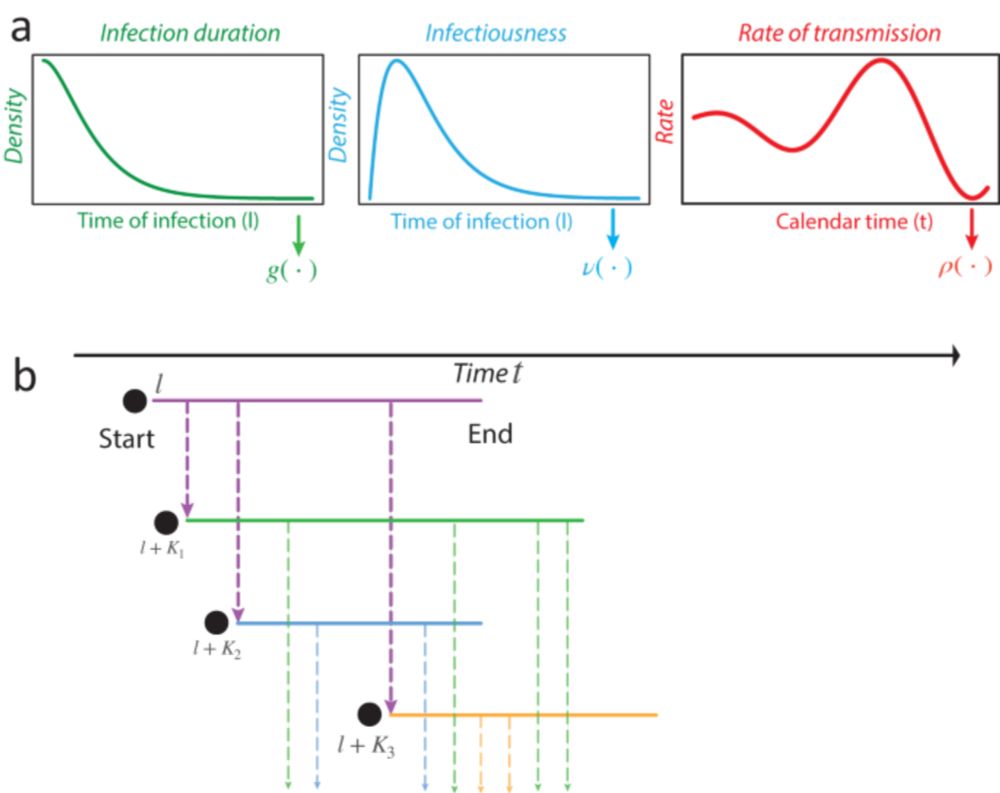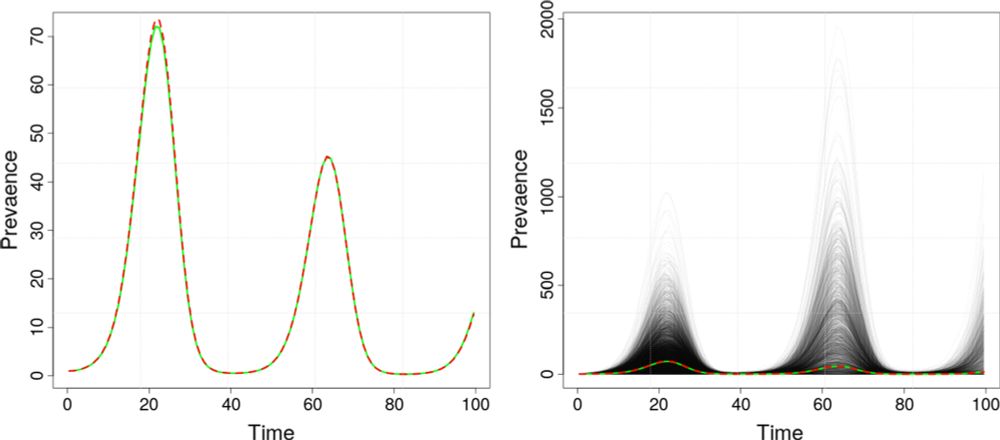Samir Bhatt
@sjbhatt.bsky.social
Professor at Imperial College London and University of Copenhagen. Academic council of Schmidt Science Fellows. Loves maths, biology and health!
Reposted by Samir Bhatt
Read more about socioeconomic & temporal heterogeneity in SARS-CoV-2 exposure in England (May 2020 - Feb 2023) in this @science.org publication 👇
doi.org/10.1126/scia...
@imperialcollegeldn.bsky.social@imperialsph.bsky.social @thomrawson.bsky.social @sjbhatt.bsky.social @cm401.bsky.social
doi.org/10.1126/scia...
@imperialcollegeldn.bsky.social@imperialsph.bsky.social @thomrawson.bsky.social @sjbhatt.bsky.social @cm401.bsky.social

Socioeconomic and temporal heterogeneity in SARS-CoV-2 exposure and disease in England from May 2020 to February 2023
Deprivation and ethnicity influenced COVID-19 outcomes, revealing health inequalities and vaccine effectiveness in the pandemic.
doi.org
June 27, 2025 at 2:25 PM
Read more about socioeconomic & temporal heterogeneity in SARS-CoV-2 exposure in England (May 2020 - Feb 2023) in this @science.org publication 👇
doi.org/10.1126/scia...
@imperialcollegeldn.bsky.social@imperialsph.bsky.social @thomrawson.bsky.social @sjbhatt.bsky.social @cm401.bsky.social
doi.org/10.1126/scia...
@imperialcollegeldn.bsky.social@imperialsph.bsky.social @thomrawson.bsky.social @sjbhatt.bsky.social @cm401.bsky.social
Ill be very curious to see how this new foundation model performs on different data, and will be pleasantly surprised if boosting is finally outperformed, its been king for a while....
January 9, 2025 at 8:01 PM
Ill be very curious to see how this new foundation model performs on different data, and will be pleasantly surprised if boosting is finally outperformed, its been king for a while....
Tabular data in contrast can be very heterogeneous and importantly, highly non-smooth, both of which can cause issues in deep neural networks. Tree methods tend to be be robust to uninformative features and orientations
arxiv.org/abs/2207.08815
arxiv.org/abs/2207.08815

Why do tree-based models still outperform deep learning on tabular data?
While deep learning has enabled tremendous progress on text and image datasets, its superiority on tabular data is not clear. We contribute extensive benchmarks of standard and novel deep learning met...
arxiv.org
January 9, 2025 at 8:01 PM
Tabular data in contrast can be very heterogeneous and importantly, highly non-smooth, both of which can cause issues in deep neural networks. Tree methods tend to be be robust to uninformative features and orientations
arxiv.org/abs/2207.08815
arxiv.org/abs/2207.08815
Deep learning seems unreasonably effective. But many areas it succeeds in, the data have nice properties. For example, images, arxiv.org/abs/2104.08894 . Which might seem complex, but lie on low-dimensional manifold. Most images are locally connected, which is why spatial analysis works so well.

The Intrinsic Dimension of Images and Its Impact on Learning
It is widely believed that natural image data exhibits low-dimensional structure despite the high dimensionality of conventional pixel representations. This idea underlies a common intuition for the r...
arxiv.org
January 9, 2025 at 8:01 PM
Deep learning seems unreasonably effective. But many areas it succeeds in, the data have nice properties. For example, images, arxiv.org/abs/2104.08894 . Which might seem complex, but lie on low-dimensional manifold. Most images are locally connected, which is why spatial analysis works so well.
While this is all quite technical, the framework we present and the code is relatively simple, and opens new avenues to using renewal type models to estimate importation and transmission dynamics from observed data.
December 9, 2024 at 1:13 PM
While this is all quite technical, the framework we present and the code is relatively simple, and opens new avenues to using renewal type models to estimate importation and transmission dynamics from observed data.
We also utilise the popular result of Barbour and Reinert to toggle a stochastic-deterministic switch to make computation faster. Using this framework we can calculate useful statistics like first passage times and times to extinction.
December 9, 2024 at 1:13 PM
We also utilise the popular result of Barbour and Reinert to toggle a stochastic-deterministic switch to make computation faster. Using this framework we can calculate useful statistics like first passage times and times to extinction.
In this new work, we have tried to apply this framework to looking at importation dynamics. The long story short is, we extend our process to a marked Poisson process and are still able to numerically compute (via vectorised computation) the probability generating function.
December 9, 2024 at 1:13 PM
In this new work, we have tried to apply this framework to looking at importation dynamics. The long story short is, we extend our process to a marked Poisson process and are still able to numerically compute (via vectorised computation) the probability generating function.
In a second paper we derived the probability generating function of a time varying Crump-Mode-Jagers process and applied it to look at uncertainty (www.nature.com/articles/s42...).

Intrinsic randomness in epidemic modelling beyond statistical uncertainty - Communications Physics
Intrinsic randomness is a critical source of uncertainty in infectious disease outbreaks. The authors show in a series of analytical results how this source of uncertainty can be better characterised.
www.nature.com
December 9, 2024 at 1:13 PM
In a second paper we derived the probability generating function of a time varying Crump-Mode-Jagers process and applied it to look at uncertainty (www.nature.com/articles/s42...).
In a first paper we proved how the renewal equation used in infectious disease modelling arises from a Crump-Mode-Jagers (and, interestingly, also a Bellman-Harris) branching process (link.springer.com/article/10.1...).

Unifying incidence and prevalence under a time-varying general branching process - Journal of Mathematical Biology
Renewal equations are a popular approach used in modelling the number of new infections, i.e., incidence, in an outbreak. We develop a stochastic model of an outbreak based on a time-varying variant o...
link.springer.com
December 9, 2024 at 1:13 PM
In a first paper we proved how the renewal equation used in infectious disease modelling arises from a Crump-Mode-Jagers (and, interestingly, also a Bellman-Harris) branching process (link.springer.com/article/10.1...).

